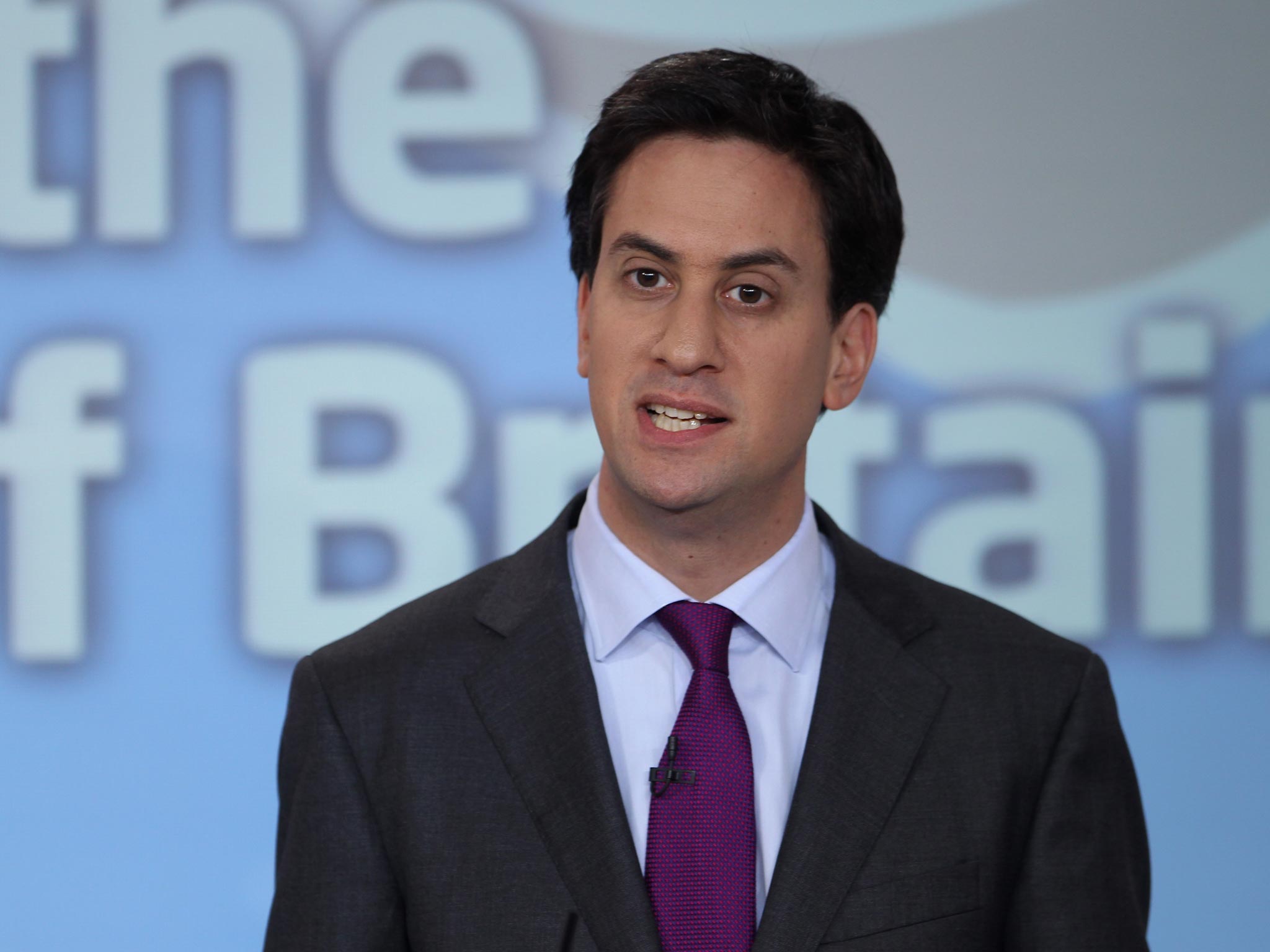Ed opens up about his image problem. Now he needs to explain some of his policies
The funny thing about the Labour leader is that he does not look funny at all when you meet him


Your support helps us to tell the story
From reproductive rights to climate change to Big Tech, The Independent is on the ground when the story is developing. Whether it's investigating the financials of Elon Musk's pro-Trump PAC or producing our latest documentary, 'The A Word', which shines a light on the American women fighting for reproductive rights, we know how important it is to parse out the facts from the messaging.
At such a critical moment in US history, we need reporters on the ground. Your donation allows us to keep sending journalists to speak to both sides of the story.
The Independent is trusted by Americans across the entire political spectrum. And unlike many other quality news outlets, we choose not to lock Americans out of our reporting and analysis with paywalls. We believe quality journalism should be available to everyone, paid for by those who can afford it.
Your support makes all the difference.It was a week of two, big, important speeches. On Monday, I watched Tony Blair at Church House, Westminster, 20 years after seeing him address Labour MPs there soon after being elected party leader.
This week, Mr Blair lived up to the label Conservative modernisers around David Cameron gave him – “the master”, a brilliant communicator still at the top of his game. Even if you think (as I do) that he was wrong on Iraq, you had to admire him. The Ed Miliband aides in the adoring audience must have wondered: if only our man was as good a presenter as he is.
While pledging to help Mr Miliband to win, the former prime minister made clear he does not agree with his strategy. “He thinks Ed is not where the public is,” said one Blair ally. “Ed gets the party; he doesn’t get the public.”
Members of the Progress group of Labour modernisers, who staged Monday’s event, cheered their hero before he had uttered a word. They ached for him to list New Labour’s achievements in power, and he did. Many do not understand why Mr Miliband’s starting point is still: “I’m not Blair.” True, he won the Labour leadership in 2010 on that ticket, neatly painting his brother David as the Blairite candidate even though David didn’t always agree with Mr Blair. After winning, Ed promised not to pick fights with his own party. Yet, in the Blairites’ eyes, he has defined himself ever since against the man who won three general elections. A week ago, Mr Miliband said his party had “moved on from New Labour” without going back to Old Labour.
I knew all week that Mr Miliband was due to make a big speech, and thought he couldn’t possibly match Mr Blair’s performance. I prepared to compare the two speeches in this column, which was unlikely to be favourable for Mr Miliband.
Yet as I watched him speak at Royal Institute of British Architects in London, I realised that Mr Miliband was also making an important and brilliant speech.
He confronted head-on the giant elephant in Labour’s room: his image problem. Rarely in 30 years of reporting national politics have I seen such a candid, self-aware and self-deprecating speech. Mr Miliband was brutally honest about his own shortcomings in presentation terms. He appealed over the heads of a largely hostile media for a hearing from the public for the different style of leadership he offers. Anyone interested in politics should read the whole speech; it raises important questions about our political culture.
For four years, the Miliband inner circle was in denial about “the Ed problem”, a phrase Labour MPs whisper. The European and local elections in May, inevitably a dry run for the general election, showed that Mr Miliband is not a good campaigner. That bacon sandwich picture said it all.
This fuelled a ruthless campaign by the Conservatives and their newspaper allies to portray Mr Miliband as “weird and weak” and, by extension, not fit to be prime minister. Such coverage snowballs as the media feeds on itself. Dangerously for Labour, the normally impartial broadcasters now look for the embarrassing “Miliband shot”. Few people could withstand such microscopic scrutiny – not even Mr Blair. An unflattering shot takes only a millisecond. Yesterday’s speech was an attempt to break this vicious circle.
The funny thing about the Labour leader is that he does not look funny at all when you meet him. I have seen him mobbed by ordinary people on trains and railway platforms – not a staged photo-op but a genuinely warm reception. John Major’s aides used to say that if he could only meet every voter in the country, he would win. Unfortunately for Mr Miliband, the vast majority of people will form their judgement of him from what they see on TV. And the truth is that he does look a bit odd on the telly, as he admitted yesterday.
Some Labour folk will worry that this speech is two years too late, as people have already made up their mind about Mr Miliband, and that first impressions stick. Yet there may still be time: disillusionment with politics means that many people will not tune in until the election nears.
His Labour critics will judge that he is being too defensive and will question his decision to advertise his weakness. Opponents in the media will doubtless accuse him of trying to move the goalposts because he is hopeless at presentation. He hopes his message that there is “more to politics than the photo-op” will get through, amid all the recycled pictures of the bacon sandwich moment and Wallace from Wallace and Gromit.
The communications task for any politician is to explain to voters in simple terms who they are, what their offer is and answer the “what will they do for me?” question. Mr Miliband talks about “big reforms” but the public has no idea what his “big idea” is. After yesterday we know more about him. Now, as Mr Blair argued this week, we need to know how Labour’s many policies fit together. Peter Mandelson used to call it New Labour’s “washing line”. It’s time for Mr Miliband to hang out his washing.
Join our commenting forum
Join thought-provoking conversations, follow other Independent readers and see their replies
Comments